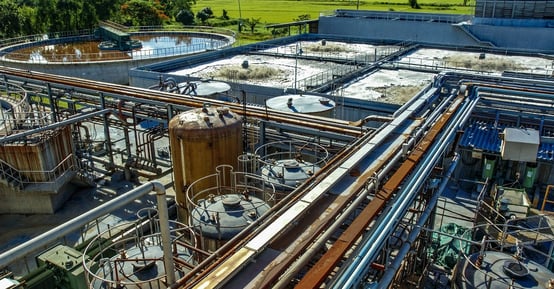Wastewater treatment plants take in sewage and runoff, process it to remove solids and harmful components, and release water back into the environment. Modern society is dependent on these plants to ensure a clean and safe environment for wildlife and recreation. Pressure transducers are used throughout wastewater plants to measure flow rate and water levels at various stages of the water treatment process.

Input and output valves are often monitored using pressure transducers to keep the system running smoothly and ensure there are no clogs, leaks or other malfunctions in the process. While some transducers monitor constant steady flow, others are subject to turbulent flow. When it comes to monitoring pressure and analyzing readings, turbulent flow and the data spikes it produces can pose a challenge.
A high accuracy pressure transducer with an adequate reading rate is quite capable of monitoring the pressure of a valve or a pipe with turbulent flow, and output all the readings. However, it then takes a technician or an external computer to process and analyze the data. Random bursts of water can skew data and give an unstable view of the system. A more sophisticated transducer can take high accuracy readings and automatically make the necessary calculations to deliver a more conclusive data set.
Mensor’s analog pressure transducer has already been implemented at some wastewater plants in the United States for its ability to take highly accurate readings and produce quality data. With Mensor's calibration software utility, users can take advantage of a data filtration system that will automatically be applied to the transducer's output string.
The CPT6030 has an exponential smoothing filter that the user can configure to collect pressure data most pertinent to their application. Using this filter, each pressure reading is compared to the reading that came before it. If the current reading is within a user defined percentage of the previous reading, it gets damped by the filter value. If the current or live reading is outside the set window, no damping occurs. The dampening value and the filter window can be strategically set to filter noise out of the data and still account for concerning pressure jumps through output valves in wastewater plants.
Most smoothing filters do not have a programmable window, which can lead to data lags. These lags are due to the time required to filter out big jumps in the data output. Mensor transducers, like the CPT6030, have a customizable window that only filters the data within a specific range. This allows for a significantly faster and more versatile output compared to windowless filter devices. In wastewater applications dealing with turbulent water flow, any data lag could be detrimental to the overall process.
Along with setting filter parameters, Mensor’s calibration software utility also allows users to calibrate digital and analog output, set calibration date, query parameters such as range, serial number and calibration date, as well as restore to factory calibration.
When it comes to pressure monitoring, control and calibration, every user application is different. Allowing users to customize the way their instruments operate is imperative for their facility’s effectiveness and efficiency. This customization can be designed from the factory or programmed into the software in a customer configurable way.
Related Reading:



